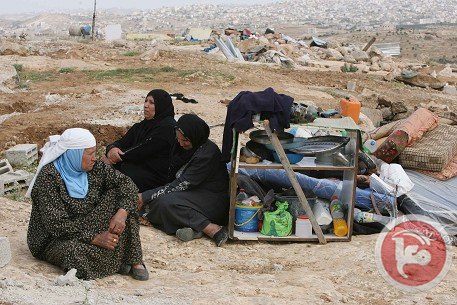Category: In the Media
-
Israeli troops arrest four civilians during morning invasions targeting West Bank communities
09 May 2011 | Palestine News Network Four Palestinian civilians were arrested by Israeli soldiers, three from the same family, during morning invasions targeting West Bank communities. In Beit Sahour, a town in southern West Bank near Bethlehem, soldiers stormed and searched the house of Assi Kassis arrested his wife and mother in addition to…
-
Bedouin hamlet destroyed for 3rd time
5 May 2011 | Maan News Women of the Bedouin herding hamlet of Khirbet Amniyr sat on the earth and watched Israeli forces demolish their 12 tent homes for the third time on Thursday morning. The women said they were waiting for the soldiers to leave so they could rebuild their tent homes and once…
-
Palestinian women smuggled into Israel for 6th time
4 May 2011 | Palestinian Solidarity Project Earlier this week, a group of 12 Israeli women smuggled 8 Palestinian women and 4 children into Israel, in defiance of Israeli law. The trip was an act of civil disobedience intended to spark debate about Israel’s system of segregation that denies Palestinians access to most of historic…

